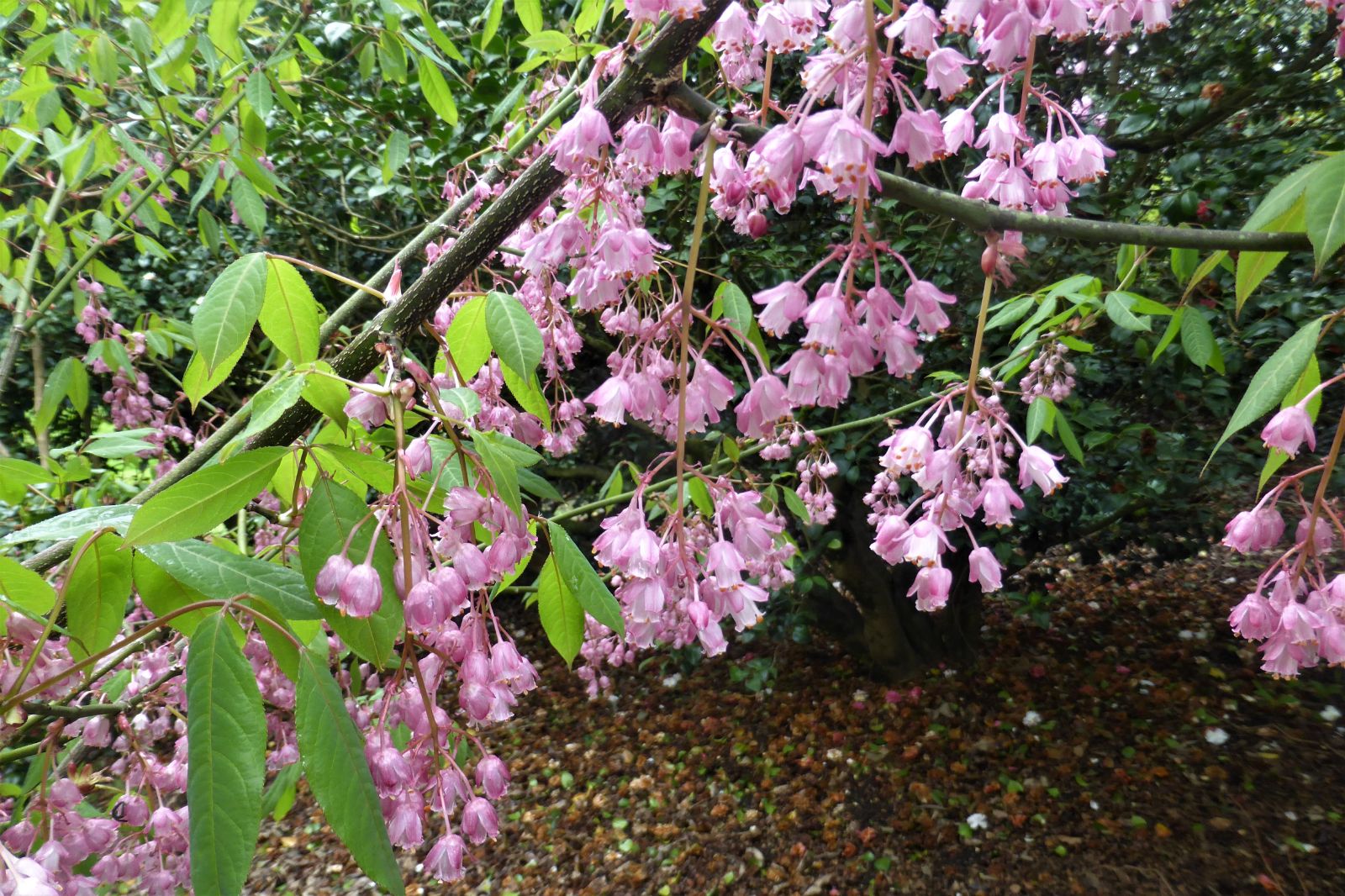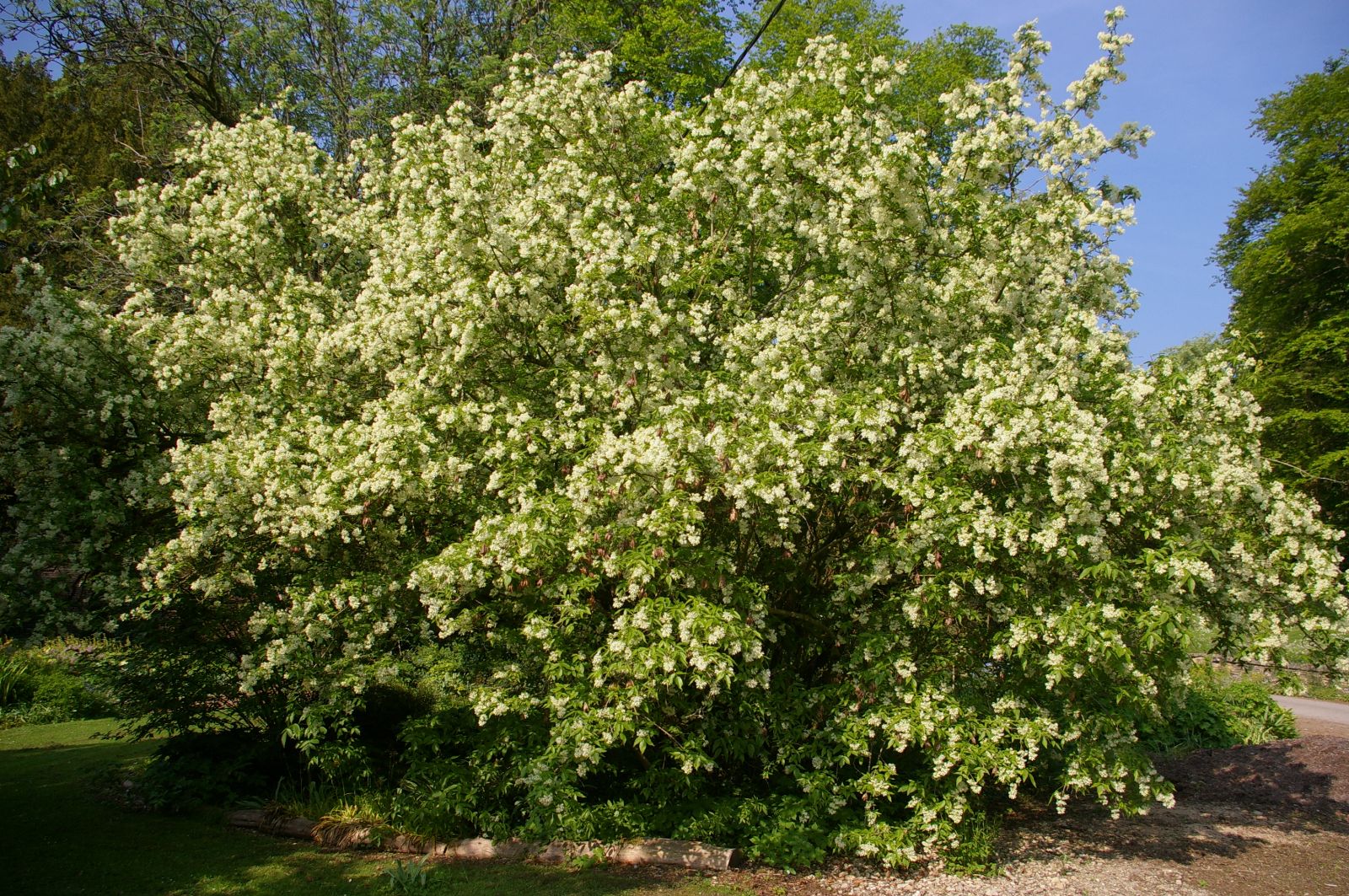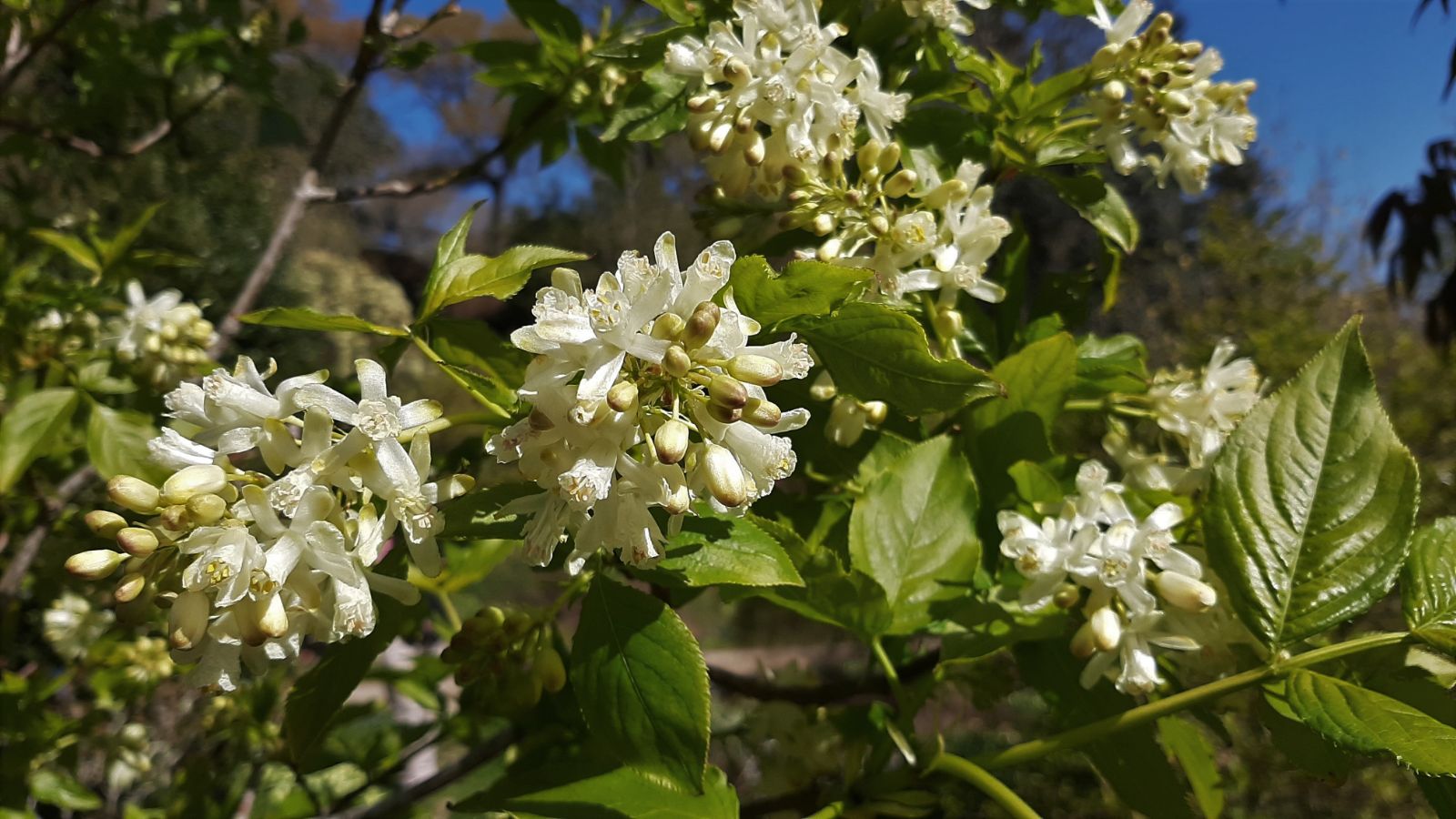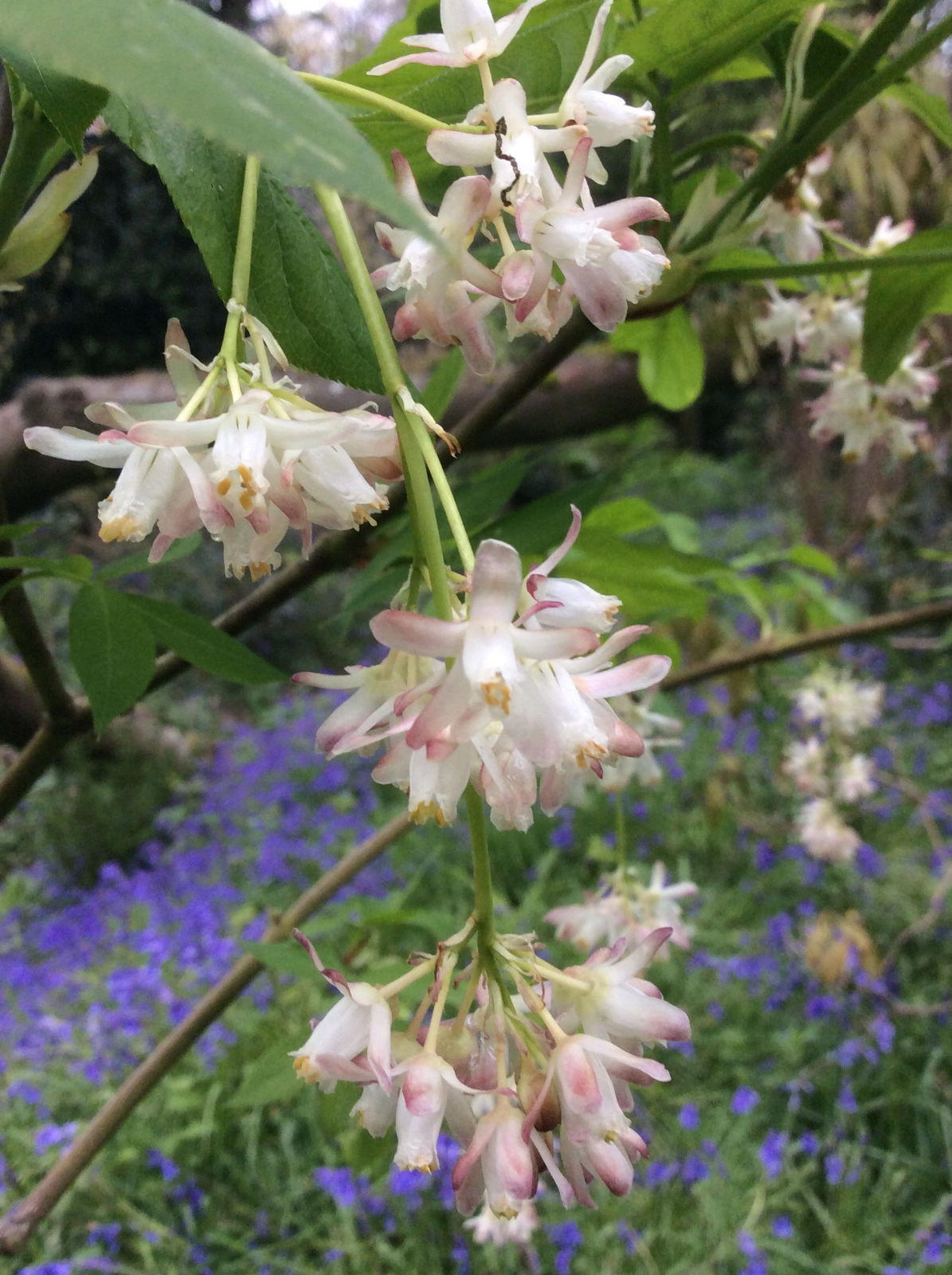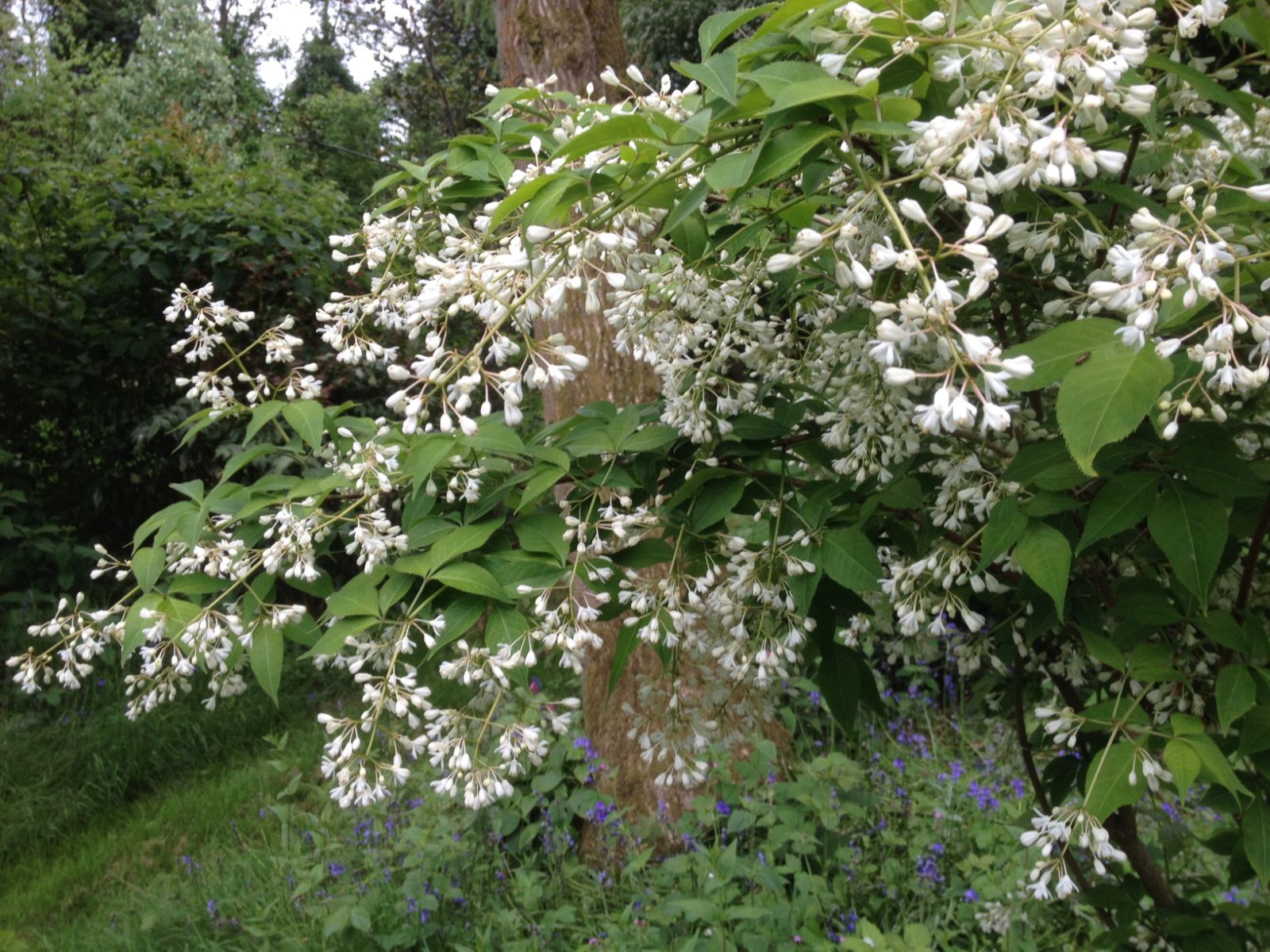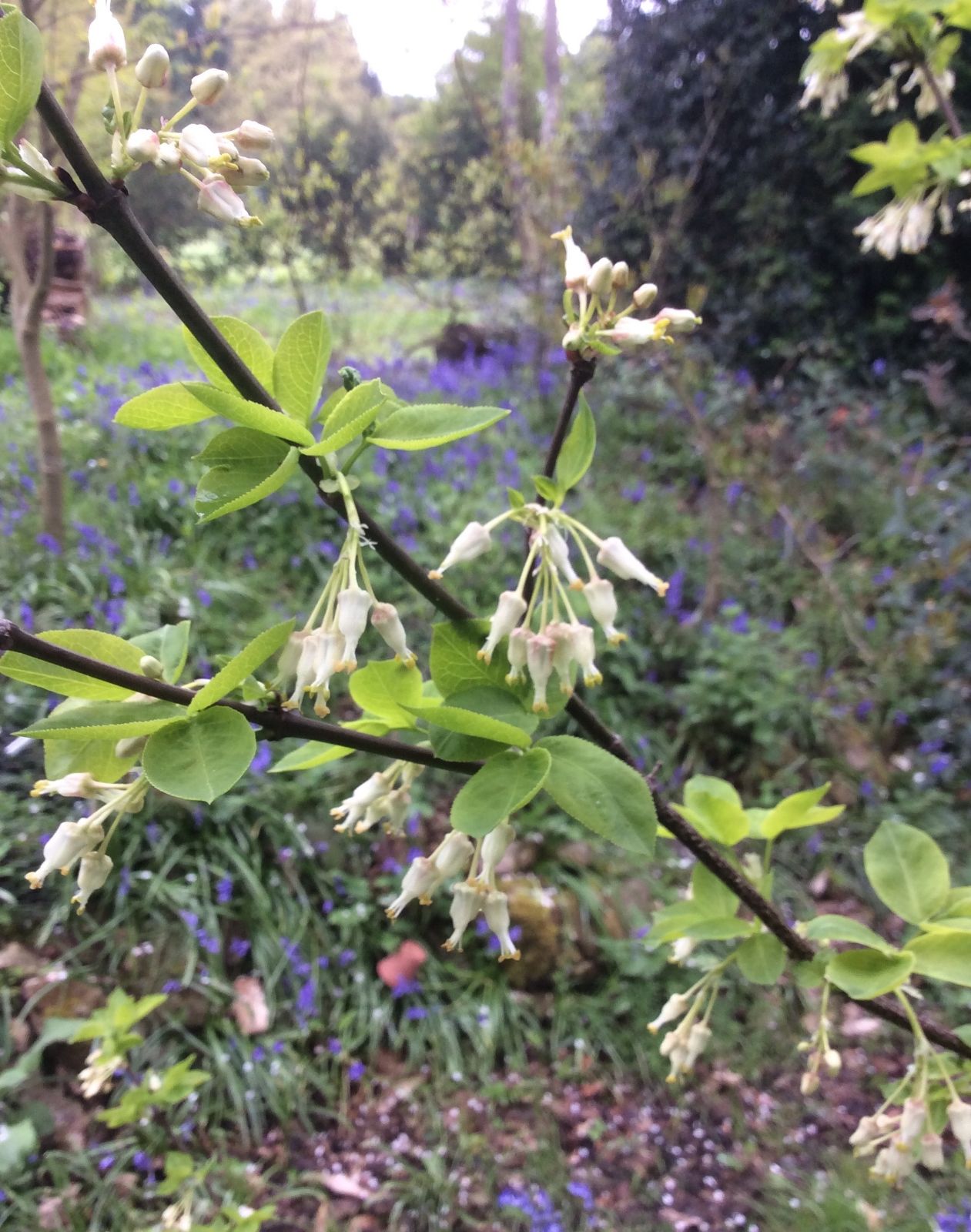Staphylea
Sponsor
Kindly sponsored by
Giles Coode-Adams
Credits
John Grimshaw (2018)
Recommended citation
Grimshaw, J. (2018), 'Staphylea' from the website Trees and Shrubs Online (treesandshrubsonline.
Family
- Staphyleaceae
Common Names
- Bladdernut
Thirteen species of deciduous shrubs to small trees, usually with multiple stems from the base. Leaves opposite, with 3–5(–7) leaflets, the terminal leaflet having a longer petiolule, leaflets oblong to elliptic, sometimes asymmetric (especially the lateral leaflets), glabrous to slightly pubescent, margins toothed, apex rounded to sub-acuminate (especially the terminal leaflet); stipules, linear and papery, soon falling. Inflorescence a terminal panicle, thyrse or raceme, borne on second-year wood and subtended by short bracts, with few to many (25+) flowers on short pedicels. Flowers hermaphrodite, appearing slightly before or as the leaves expand, with five equal sepals surrounding five equal petals that form a narrow or wider tube; the five stamens are inserted at the base of the petals but often exceed the corolla tube; ovary with two or three locules and styles that may or may not be united, with several ovules per locule. Capsule inflated and bladder-like, becoming dry and stiffly-papery, persisting through the winter, dehiscing at the apex of each section; seeds shiny, yellow to brown. (Bean 1981, Brouillet 2015, Li, Cai & Wen 2008).
Fossil records indicate an ancient origin for the Staphyleaceae (the only other member of the family, Dalrymplea, is tropical), with seeds attributable to extant taxa having been found in Tertiary deposits (Christenhusz, Fay & Chase 2017). This antiquity explains the current interesting distribution of Staphylea; although it occurs across Eurasia and North America the species are often widely geographically separated. There is a small concentration in China, though some taxa are locally endemic and have not been introduced (S. yuanjiangensis K. M. Feng & T. Z. Hsu (Yunnan), S. campanulata J. Wen (Sichuan), S. shweliensis W. W. Smith (NW Yunnan), S. forrestii I. Balfour (WC China), described as being a tree to 17 m! (Flora of China). The west Himalayan and Afghan taxon known as S. emodi Wall. is poorly understood. The Mexican species are also little known and seldom cultivated, though S. pringlei S. Watson is grown at the University of California Botanical Garden at Berkeley from several collections made in Tamaulipas during the 1990s (https://webapps.cspace.berkeley.edu/botgarden/search/search/). It appears to be similar to S. holocarpa.
Staphylea may not be in the first league of showy shrubs, but its charms win it a following of admirers: the flowers in late spring are often delightful in effect and fragrance, and the persistent capsules provide a very long season of interest. In effect, they can resemble a Syringa – and in some cases far outstrip lilacs for beauty of flower and interest of foliage. Since the early seventeenth century, the flower shape has been compared to that of a daffodil (Narcissus), with the petals forming a ‘trumpet’ surrounded by more widely spreading sepals, which may be of a different colour (Coats 1992).
No well-stocked garden should be without one or two representatives, though they should be given space to fully express themselves as they can become quite large. Suckers can be detached for propagation, and both softwood and hardwood cuttings root easily. Seed can be harvested whenever the capsules have dehisced, whether in autumn or through into spring, and will germinate after a cold period. They will grow in most reasonable soils and are generally extremely hardy, although the Central American species are apparently unknown in European cultivation and may require warm conditions if ever introduced. They are reported as being notably resistant to honey fungus (Armillaria spp.) (Huxley, Griffiths & Levy 1992).
Identification key | ||
| 1a | Ovary/Fruits with 2 locules | 2 |
| 1b | Ovary/Fruits with (2-)3 locules | 3 |
| 2a | Leaflets 3, flowers creamy-white, fruits somewhat flattened, to 2.5 cm long | S. bumalda |
| 2b | Leaflets (3-) 5 (-7), flowers white, sometimes tinged pink at the apex, especially in bud, fruits roundly inflated, 2.5-3.5 cm | S. pinnata |
| 3a | Leaflets 3 | 4 |
| 3b | Leaflets 3-5 (often 3 on short flowering shoots, 5 on vegetative growth) | 6 |
| 4a | Leaflets glabrous, flowers to 12 mm, fruit to 5 cm | S. bolanderi |
| 4b | Leaflets with hairs on lower surface | 5 |
| 5a | Leaflets with persistent hairs on veins when mature, often pubescent below when young, flowers c. 12.5 mm, white or pink, fruit to 5 cm, not distinctly lobed | S. holocarpa |
| 5b | Leaflets persistently downy with pale hairs below, flowers c. 8 mm, dull white, fruit 3-5 cm, with longer points | S. trifolia |
| 6a | Flowers white | 7 |
| 6b | Flowers pink, leaflets usually 5 | S. × coulombieri 'Hessei' |
| 7a | Leaflets more or less equal, flowers to 2 cm, white with green sepals, fruit 7.5-10 cm | S. colchica |
| 7b | Terminal leaflet much larger than others, up to 12.5-15 cm, flowers pink-tinged in bud, fruit 3.5-5 cm | S. × coulombieri |

